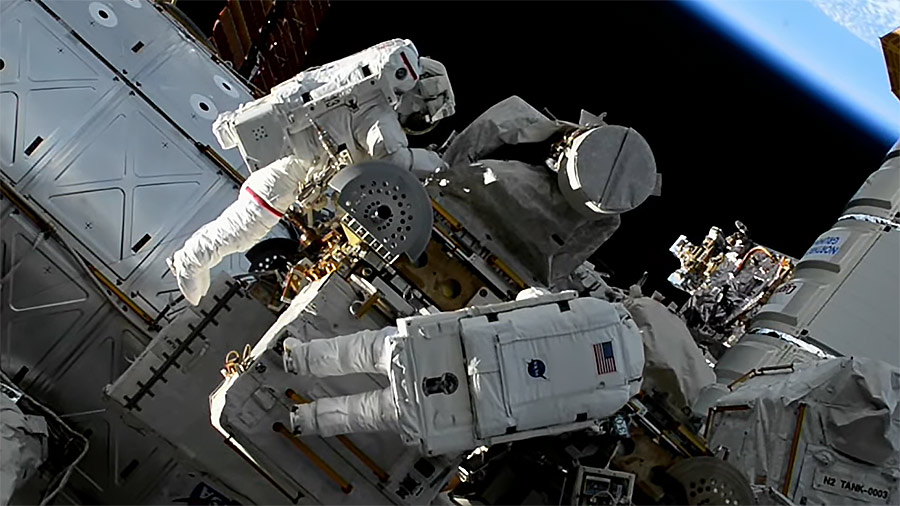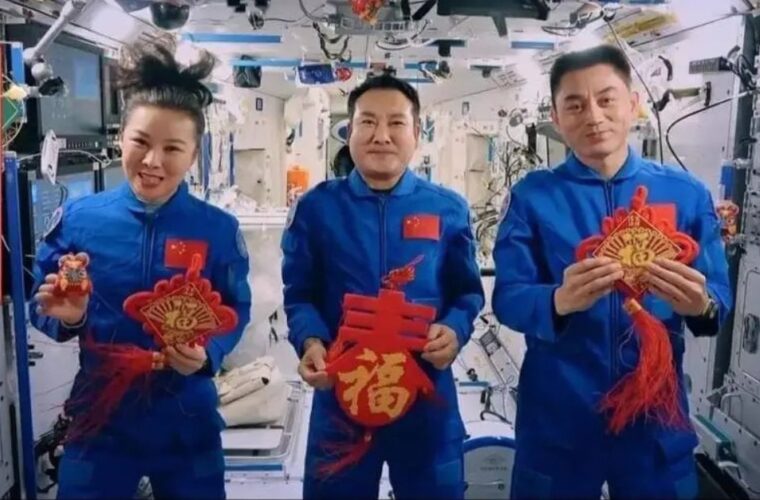NASA astronauts accidentally dropped their toolbox during a walk around the International Space Station, and the drifting equipment may be observable from Earth.
The astronauts Jasmine Mogbeli and Loral O’Hara spent six hours and 42 minutes outside the International Space Station for maintenance work. By accident, a toolbox fell from them.
“The astronauts had planned to remove and stow a communications electronics box called the Radio Frequency Group, but there was not enough time during the spacewalk to complete the work. The duo lifted some multilayer insulation to make a better assessment of how to approach the job before replacing the insulation and deferring the task to a future spacewalk,” NASA said in an update on its website about the spacewalk.
“During the activity, one tool bag was inadvertently lost. Flight controllers spotted the tool bag using external station cameras. The tools were not needed for the remainder of the spacewalk. Mission Control analyzed the bag’s trajectory and determined that the risk of recontacting the station is low and that the onboard crew and space station are safe with no action required”.
Moghbeli and O’Hara are currently engaged in a scientific mission while residing and conducting work in the microgravity laboratory. Their objective is to enhance scientific understanding and showcase innovative technologies for upcoming human and robotic exploration ventures. This includes lunar missions as part of NASA’s Artemis program.

You could see it from Earth
Now, the white bag is orbiting around the Earth, and it is even visible, although not with the naked eye. Specifically, astronaut Soichi Furukawa recorded the object while photographing Mount Fuji in Japan from the International Space Station.
According to EarthSky, some people should be able to see it floating around with just a pair of binoculars. “It’s surprisingly bright (for a tool bag), shining just below the limit of visibility to the unaided eye,” its website said.
According to NASA, the lost tools were not deemed essential for the two astronauts for the remainder of their spacewalk. Mission controllers analyzed the trajectory of the white bag, confirming a low risk of collision with the ISS and ensuring the crew’s safety.
The bag has been catalogued as space debris and is expected to return to Earth’s orbit in the coming months. However, there is a likelihood that it will ignite when reaching an altitude of approximately 113 kilometres. This is not the first time an object has been lost in space.
In 2008, Heidemarie Stefanyshyn-Piper experienced the loss of her toolbox while repairing damage on the International Space Station (ISS). The misplacement of this bag compelled mission controllers to alter plans for the remaining spacewalks scheduled during the Endeavour mission.
In 2006, during a spacewalk, Piers Sellers admitted to misplacing a spatula. Additionally, in 1965, Ed White, the first American spacewalker, lost a spare glove during his inaugural extravehicular activity. There are believed to be around 100,000 items of orbital debris currently circling the earth.
Space debris poses a significant challenge for space missions, and addressing it is a major undertaking for the scientific community. However, generating such space debris is relatively easy – all it takes is a spacewalk and a momentary lapse in attention!



